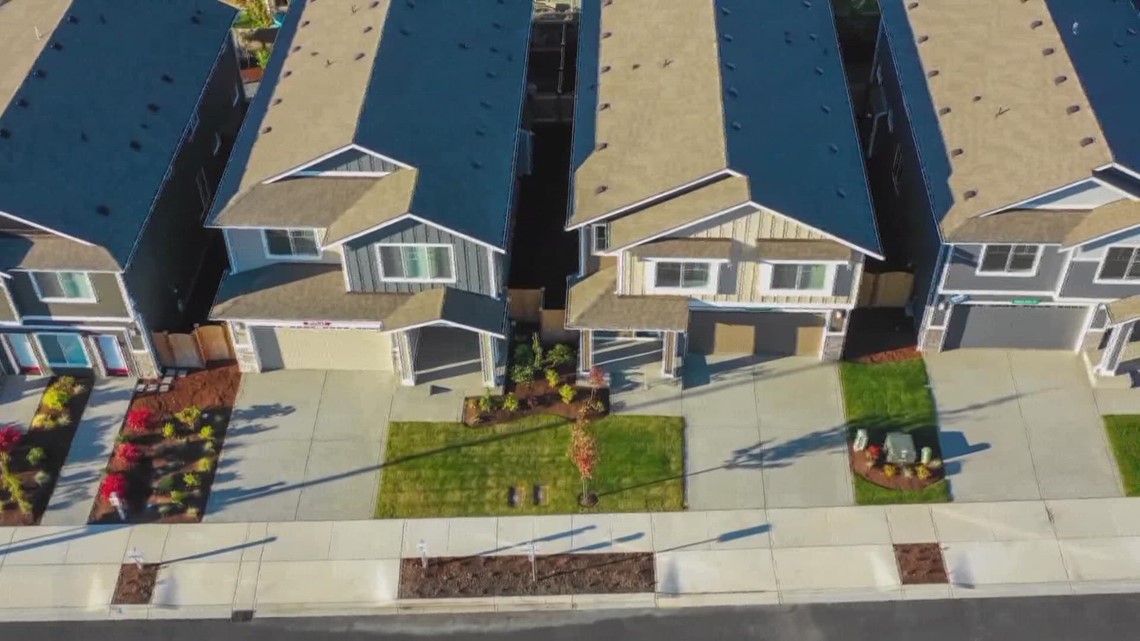If you’ve been following real estate news lately, you’ve probably heard about the Phoenix housing market correction. Once one of America’s hottest housing markets, Phoenix is now showing signs of cooling off — but not crashing.
From skyrocketing prices during the pandemic to rising mortgage rates and shifting migration trends, the Phoenix housing market has entered a new phase. For homeowners, investors, and first-time buyers, understanding this correction is crucial to making smart decisions in 2025 and beyond.
In this post, we’ll dive deep into what’s really happening, why it’s happening, and what it means for you.
What Does a Housing Market Correction Really Mean?
Before we jump into data, let’s clarify what a housing market correction actually is.
A correction isn’t a crash — it’s a natural realignment after a period of overheated growth. In the Phoenix housing market correction, prices aren’t plummeting overnight. Instead, growth is slowing, inventory is building, and buyers are regaining some bargaining power.
Typically, a correction involves:
- Slower price appreciation or slight price declines.
- Longer days on market, as buyers take more time to decide.
- Increased listings, giving buyers more options.
- Fewer bidding wars and more price reductions.
In short, the Phoenix housing market correction represents a return to balance — not a disaster.
How the Phoenix Market Became Overheated
To understand today’s cooling, we need to look at the boom that came before it.
Between 2020 and 2022, Phoenix experienced record-breaking home price growth, driven by:
- Low interest rates that made borrowing cheap.
- In-migration from high-cost states like California and Washington.
- Pandemic-era remote work, which expanded where people could live.
- Investor activity, including institutional buyers snapping up entire neighborhoods.
During this period, Phoenix’s median home price rose by over 40%, according to Redfin and Zillow data. That kind of growth was unsustainable.
By late 2023 and into 2024, affordability pressures began to mount. Mortgage rates jumped above 7%, and wage growth couldn’t keep up. The result? Demand cooled, inventory grew, and the Phoenix housing market correction began to take shape
Key Signs of the Current Phoenix Housing Market Correction
Several data points in 2025 clearly indicate that Phoenix is in a correction phase:
1. Home Prices Are Softening
Median home prices have slipped about 1–3% year-over-year, depending on the neighborhood. While this isn’t a crash, it’s a noticeable shift after years of double-digit gains.
2. Inventory Levels Are Rising
Listings are up roughly 20% compared to last year, the highest level in nearly a decade. More supply means buyers can afford to be patient and choosier.
3. Homes Are Staying on the Market Longer
Nearly half of active listings have been on the market for more than 60 days — a strong indicator that demand has cooled.
4. Sellers Are Offering Incentives
Price cuts, mortgage rate buydowns, and closing-cost assistance are becoming common. In the Phoenix housing market correction, sellers must compete for buyer attention.
5. Fewer Investor Purchases
Institutional investors who once fueled rapid price appreciation have pulled back significantly. Without their volume, organic buyer demand determines the market.
These signs confirm what many analysts describe as a soft correction rather than a collapse
Top Reasons Behind the Market Correction
The Phoenix housing market correction didn’t appear overnight. Several intertwined forces are driving this transition.
1. High Mortgage Rates
Mortgage rates hovering around 7% have dramatically reduced buying power. A $500,000 home in 2021 might now cost a buyer hundreds more per month in payments — pricing many out.
2. Affordability Limits
According to the Common Sense Institute, Phoenix’s home affordability index is at its lowest in years. When prices outpace incomes, corrections become inevitable.
3. Rising Inventory and New Construction
Homebuilders who ramped up production during the boom are now contributing to oversupply. With more homes available, competition among sellers is intensifying.
4. Slowing Population Growth
After years of rapid migration, Phoenix’s population growth is stabilizing. Some reports even suggest slight out-migration to smaller, more affordable Arizona cities.
5. Investor Pullback
Institutional investors, once a major force in Phoenix real estate, are retreating as profit margins shrink. This reduces artificial demand pressure.
6. Changing Buyer Psychology
Fear of missing out (FOMO) has flipped into fear of overpaying (FOOP). Buyers are waiting for deals instead of rushing into bidding wars.
Together, these dynamics have cooled one of the country’s hottest housing markets.
Impact on Buyers, Sellers, and Investors
The Phoenix housing market correction affects everyone differently.
For Buyers:
- Good news: More choices, less competition, and occasional price flexibility.
- Caution: Mortgage rates remain high, so affordability is still an issue.
- Tip: Focus on well-priced homes in desirable locations; don’t overextend financially.
For Sellers:
- Challenge: Pricing strategy is everything. Overpricing will lead to longer wait times.
- Opportunity: Well-maintained, move-in-ready homes are still selling quickly.
- Tip: Work with an experienced local agent who understands current buyer sentiment.
For Investors:
- Short-term: Flipping profits have narrowed as appreciation slows.
- Long-term: Rental demand remains strong due to population and job growth.
- Tip: Look for undervalued properties in areas with high rental yields.
The correction is separating speculative investors from strategic investors who plan for sustainability.
Expert Forecast for 2025–2026
Most experts agree that the Phoenix housing market correction is a healthy rebalancing rather than a meltdown.
- Price Outlook: Expect flat or slightly negative growth (–2% to +1%) through early 2026.
- Inventory Trend: Elevated but stabilizing as new construction slows.
- Mortgage Rates: Gradual declines may bring some buyers back in late 2025.
- Demand Forecast: Solid in core neighborhoods (Scottsdale, Tempe, Chandler); weaker in outlying areas.
Real estate remains a long-term asset. Those waiting for a “crash” may be disappointed — the fundamentals in Phoenix still support long-term stability once the correction runs its course.
How to Navigate the Phoenix Housing Market Correction
Whether you’re buying, selling, or investing, success in this new environment requires strategy and patience.
1. Stay Grounded in Data
Follow local market updates — not just national headlines. Tools like Redfin Trends or Zillow Home Value Index offer up-to-date insights.
2. Focus on Long-Term Value
The best investments are in areas with strong job growth, infrastructure, and community amenities.
3. Don’t Try to Time the Bottom
Waiting for the “perfect” moment can cost you opportunities. If a property fits your needs and budget, it’s worth considering.
4. Get Creative with Financing
Ask about seller concessions, temporary rate buydowns, or adjustable-rate mortgages to improve affordability.
5. Partner with Local Experts
A knowledgeable local realtor or property manager can guide you through micro-market nuances that national data misses.
In short, navigating the Phoenix housing market correction means combining patience with informed action.
FAQ: Phoenix Housing Market Correction
1. Is the Phoenix housing market crashing?
No. It’s correcting, not crashing. Prices are stabilizing after years of rapid gains.
2. How much have home prices dropped in Phoenix?
On average, prices are down 1–3% year-over-year, depending on the neighborhood and price tier.
3. Should I buy a home during a market correction?
Yes, if you plan to stay long term and find a fairly priced property. Buyers currently have more leverage and choices.
4. Will prices drop more in 2026?
Analysts expect mild fluctuations but not a significant crash. The market will likely find equilibrium as rates ease.
5. How can sellers stay competitive?
Price your home realistically, invest in curb appeal, and be open to concessions or incentives.
Conclusion: The Road Ahead for Phoenix Real Estate
The Phoenix housing market correction is a natural phase of a healthy real estate cycle — a breather after years of overheated growth.
While higher mortgage rates, rising inventory, and affordability pressures are reshaping the market, Phoenix remains one of the most dynamic metros in the U.S. Strong employment sectors, lifestyle appeal, and long-term population trends continue to support its housing fundamentals.






Leave a Reply